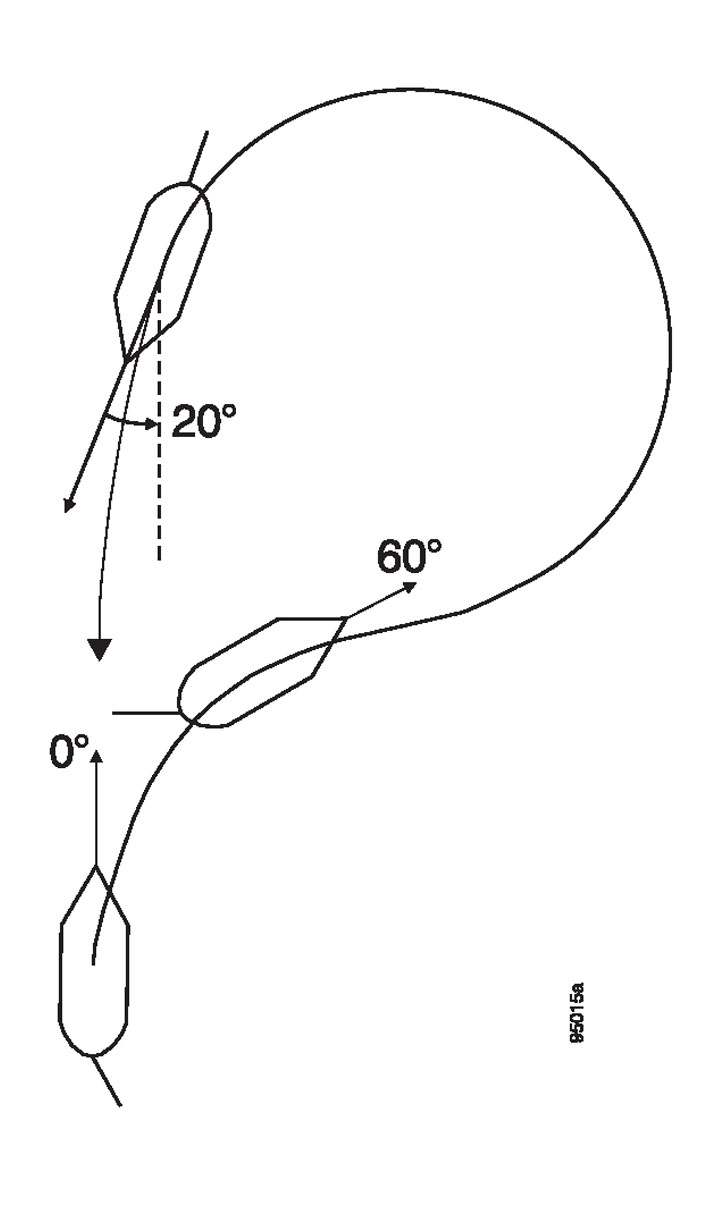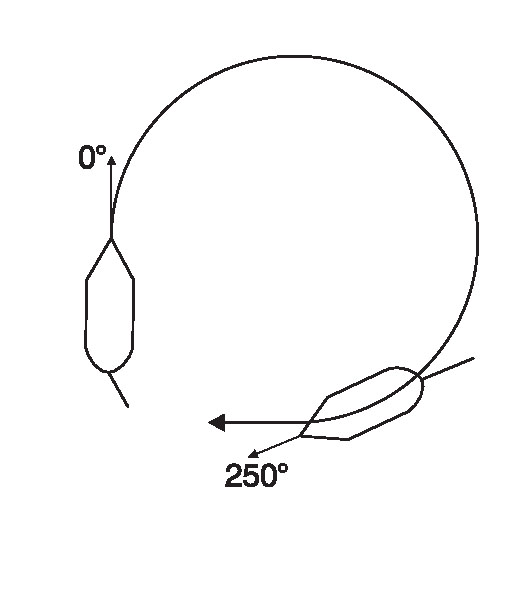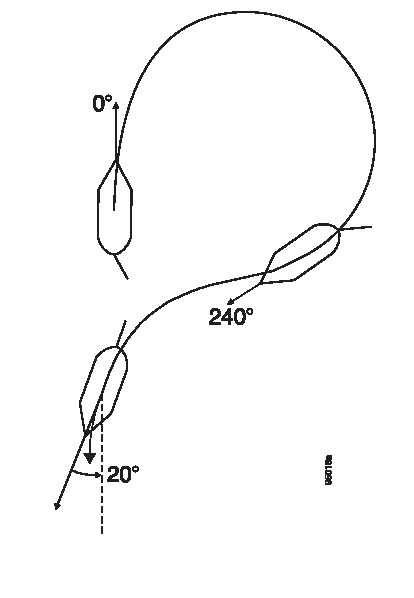
|
|
Makes good original track line |
|
|
Good in reduced visibility |
|
|
Simple |
|
|
Takes the ship farther away from the scene of the incident |
|
|
Slow procedure |
Figure: Williamson turn
|
|
Rudder hard over (in an ``immediate action'' situation, only to the side of the casualty). |
|
|
After deviation from the original course by 60°, rudder hard over to the opposite side. |
|
|
When heading 20° short of opposite course, rudder to midship position and ship to be turned to opposite course. |
|
|
Fastest recovery method. |
|
|
Good for ships with tight turning characteristics. |
|
|
Used most by ships with considerable power. |
|
|
Very difficult for a single-screw vessel. |
|
|
Difficult because approach to person is not straight. |

Figure: One turn
|
|
Rudder hard over (in an ``immediate action'' situation, only to the side of the casualty). |
|
|
After deviation from the original course by 250°, rudder to midship position and stopping maneuver to be initiated. |
|
|
Will take vessel back into her wake |
|
|
Less distance is covered, saving time |
|
|
Cannot be carried out effectively unless the time elapsed between occurrence
of the incident and the commencement of the manoeuvre is known |
|
|
Cannot be used in an immediate action situation. |

Figure: Scharnov turn
|
|
Rudder hard over to any side. |
|
|
After deviation from the original course by 240°, rudder hard over to the opposite side. |
|
|
When heading 20° short of opposite course, rudder to midship position so that ship will turn to opposite course. |
Source: IMO IAMSAR Manual Vol-III.
Last updated: 20-Oct-2007